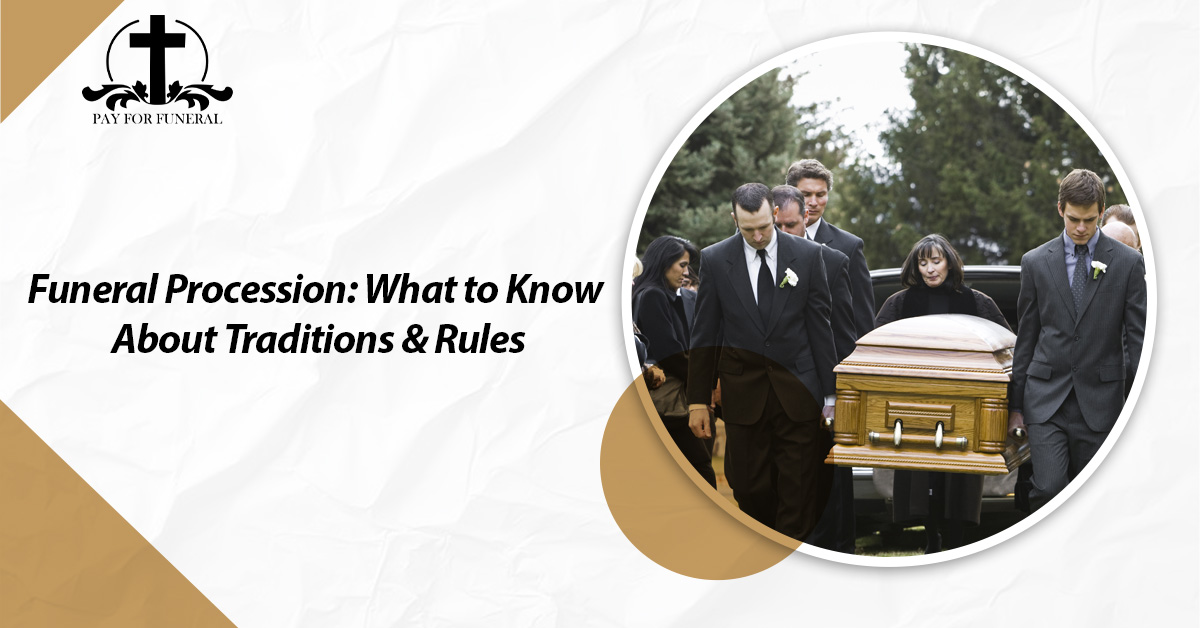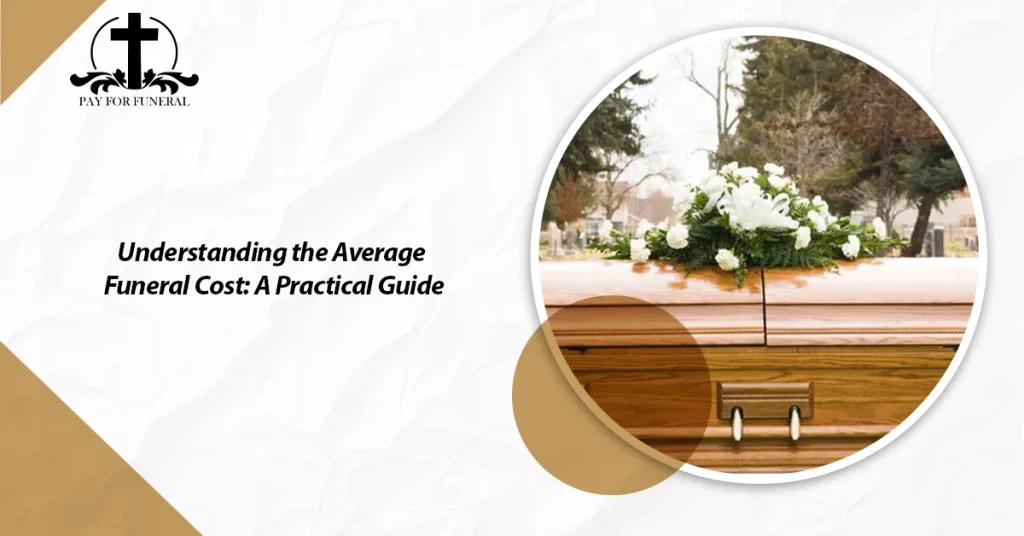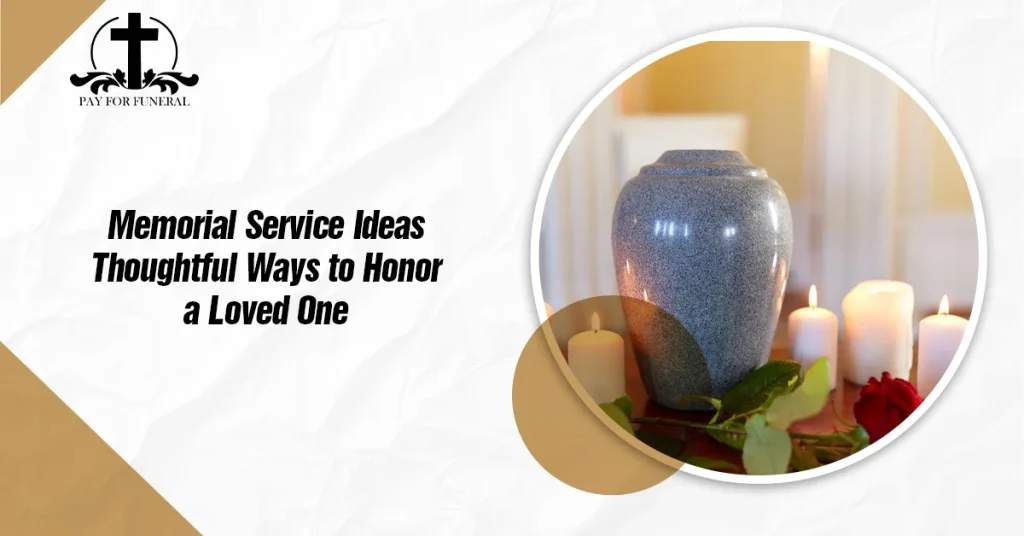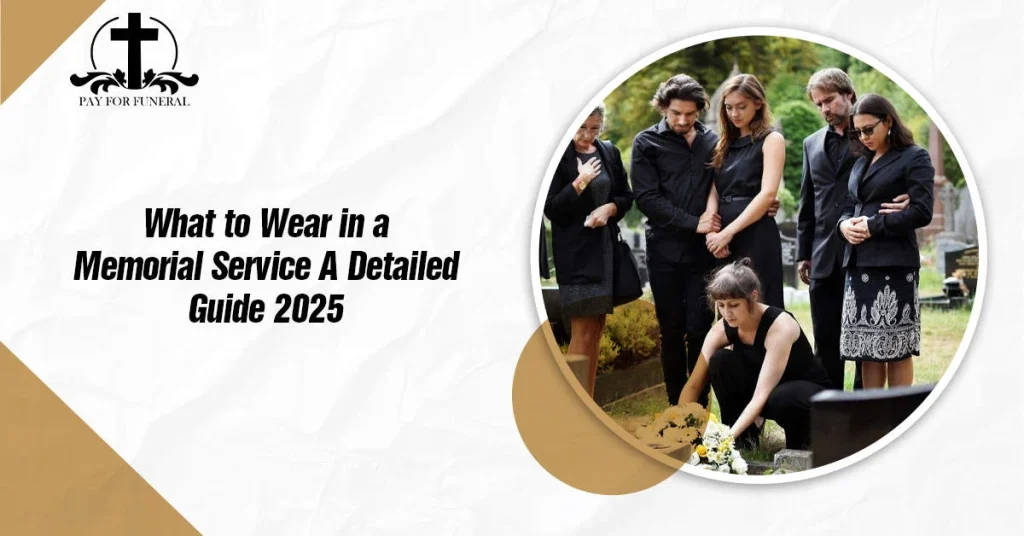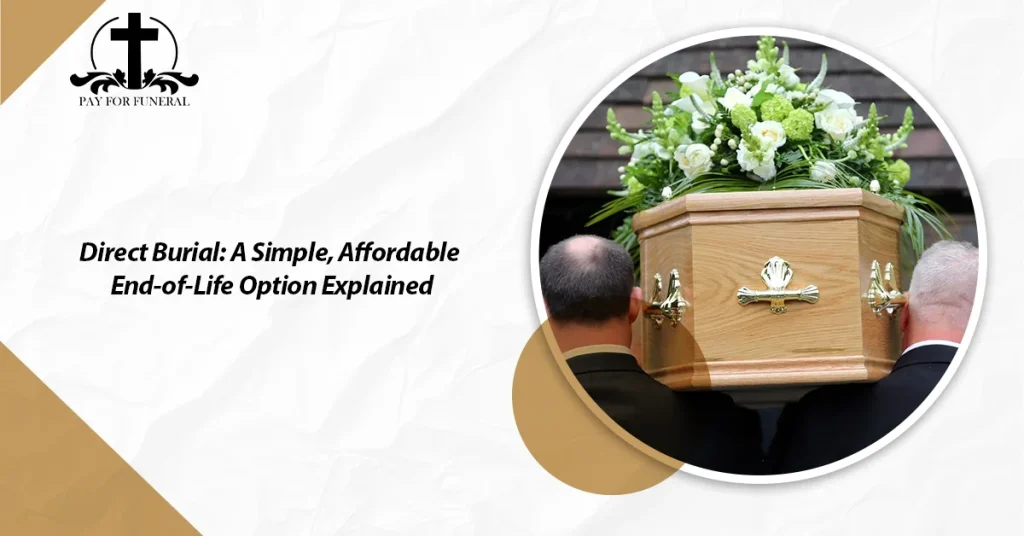Introduction
A funeral procession is more than just a line of vehicles—it is a meaningful symbol of respect, remembrance, and shared grief. It marks the final journey of a loved one, giving family and friends a moment of unity as they accompany the deceased to their resting place. In this guide, we’ll cover what a funeral procession involves, how to plan one, proper etiquette, and important legal considerations. Whether you’re organizing a ceremony or simply seeking to understand the tradition, this article offers the essential information you need.
What is a Funeral Procession?
A funeral procession is a ceremonial convoy of vehicles or mourners that accompanies the deceased from the funeral service location to the final resting place, usually a cemetery. It serves as a powerful symbol of respect, collective mourning, and final farewell.
Funeral Procession Rules
There are general funeral procession rules followed in most regions to ensure dignity and safety during this solemn journey:
- Vehicles typically drive with headlights on and follow a slow, respectful speed.
- Processions often have the right of way at intersections, depending on local laws.
- A lead vehicle, usually a hearse, guides the procession.
- Participants are expected to follow closely and avoid interruptions between vehicles.
These guidelines not only provide order but also symbolize the community’s shared support and tribute to the deceased.
Get Free Quotes
Customized Options Await
Historical and Cultural Origins of Funeral Processions
Funeral processions have deep historical roots. In ancient Egypt and Rome, public processions displayed the deceased’s social status. In medieval Europe, bells, torches, and chanting marked the passage through town.
Culturally, funeral processions are rich in meaning:
- Hindu traditions may include a procession to the cremation site with chanting and offerings.
- In Islam, the body is carried by hand to the grave, emphasizing humility.
- New Orleans jazz funerals blend African, French, and African-American influences in a vibrant, music-filled procession.
Funeral March and Religious Significance
Music, particularly the funeral march, has long held a central role in funeral rituals. It sets the tone for mourning, reflection, and respect.
- One of the most famous examples is Frédéric Chopin’s Funeral March, often used in Western funerals to evoke solemnity.
- In Christian traditions, hymns like “Abide with Me” are common during the procession.
- Bagpipes are frequently heard in military and police funerals, particularly in the UK and US.
Music creates an emotional backdrop that supports mourning rituals and enhances the sacred nature of the procession.
How Do I Plan for a Funeral Procession?
Planning a funeral procession requires sensitivity, coordination, and attention to detail. Here’s a basic checklist to guide you:
- Choose the Route: Select a path from the funeral service to the burial site that’s respectful, efficient, and meaningful.
- Organize Transportation: Coordinate the hearse, family vehicles, and any additional escorts or limousines.
- Coordinate with Authorities: Notify local law enforcement for potential escorts or traffic assistance.
- Work with a Funeral Director: A licensed director helps manage logistics, timing, and ceremonial aspects.
- Schedule Thoughtfully: Ensure the procession doesn’t conflict with traffic patterns, holidays, or cemetery hours.
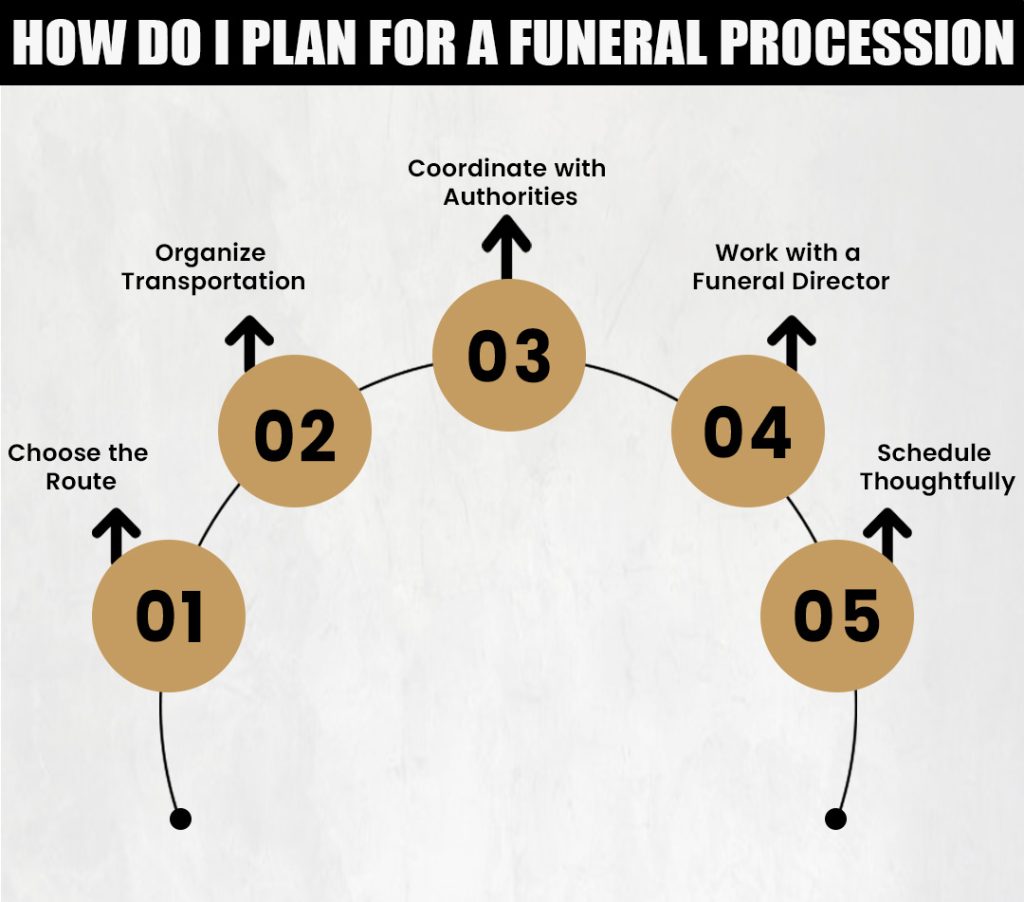
Burial Ceremony and Processional Order
The burial ceremony often follows the procession, with its own customs and order:
- The traditional processional order typically begins with the hearse, followed by immediate family, extended family, and close friends.
- At the graveside, religious rites such as prayers, blessings, or scripture readings may be performed depending on faith.
- Military honors may include a flag-folding ceremony, gun salute, and the playing of “Taps” for veterans and service members.
These elements add dignity and personal significance to the final stage of the farewell.
Procession at a Funeral: What to Expect
A procession at a funeral follows a fairly consistent sequence, though it may be shaped by cultural or religious traditions. Understanding what to expect can help attendees participate respectfully and meaningfully.
Typical Sequence of Events
- Funeral Service: Held at a place of worship, funeral home, or private residence.
- Assembly: Mourners gather and prepare vehicles. Procession flags, headlights, or hazard lights are used to identify vehicles.
- The Procession: The hearse leads, followed by family and other mourners.
- Arrival at Burial Site: Vehicles are parked, and attendees gather graveside for final rites.
Role of Pallbearers, Clergy, Family Members
- Pallbearers carry or escort the casket from the service to the hearse, and then to the grave.
- Clergy or officiants lead prayers, readings, or chants.
- Family members often ride in the first few cars and may participate in eulogies, rituals, or placing earth or flowers on the casket.
Variations by Faith or Culture
- Christian: May involve hymns, psalms, and the sign of the cross.
- Jewish: Typically includes a procession by foot in some Orthodox communities, and the recitation of the Mourner’s Kaddish.
- Islamic: The body is usually carried by mourners and buried as soon as possible after death.
- Hindu: Processions to the cremation site often include chants and flowers.
- Buddhist: May feature drumming, chanting, and incense to honor the spirit’s journey.
Religious Rites and Cultural Practices
Religious rites and cultural practices during a procession carry profound meaning:
- Catholic: Incense is swung over the casket to sanctify and purify.
- Buddhist: Chanting helps guide the soul to its next life.
- Orthodox Christian: Processions may circle the church three times with the coffin before heading to the burial site.
- Indigenous cultures: Might include traditional songs, drumming, or sacred items placed with the deceased.
These practices not only reflect belief systems but also offer comfort and continuity for grieving families.
Funeral Procession Laws: Know Before You Drive
Understanding funeral procession laws is crucial for both mourners and the general public. Laws vary by state but are designed to protect the dignity of the procession and ensure safety.
Funeral Procession Scriptures and Legal Interpretations
Some states refer to ethical or spiritual foundations when shaping these laws, especially in regions with strong religious influence. While not literal “scriptures,” many laws emphasize respect for the dead as a moral obligation.
Key Legal Aspects (may vary by state):
- Right of Way: Many states grant funeral processions the right of way at intersections.
- Hazard Lights & Flags: Vehicles in a procession often use headlights, emergency flashers, and funeral flags.
- Escort Vehicles: Police escorts or lead cars may be used to manage traffic.
- Penalties: Failing to yield to a procession can result in traffic citations or fines.
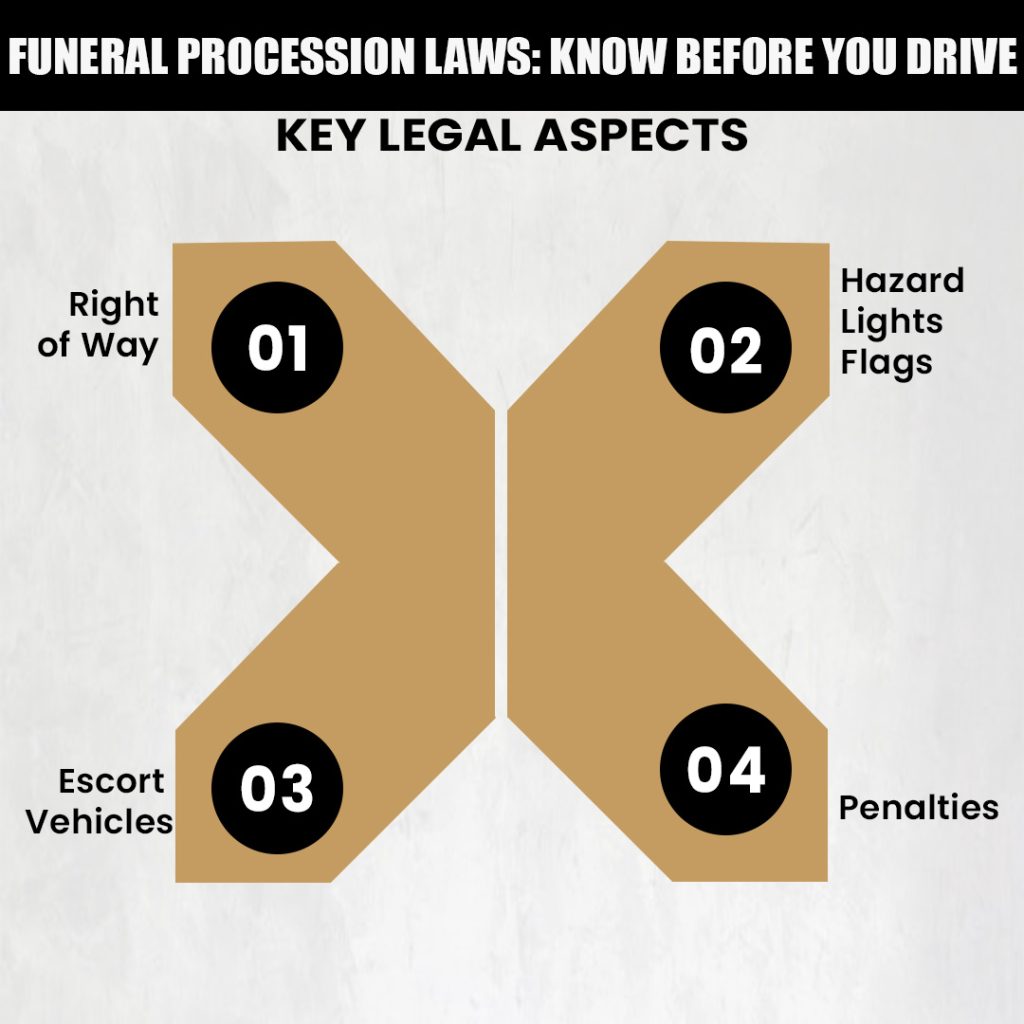
Funeral Procession Etiquette: What’s Expected?
Participating in or encountering a funeral procession calls for respectful behavior and awareness of social customs. Whether you’re driving in the procession, attending the service, or a bystander, understanding proper etiquette helps honor the deceased and support grieving families.
Dos and Don’ts for Drivers and Participants
DO:
- Keep your headlights and hazard lights on if you’re in the procession.
- Follow closely and cautiously to avoid gaps between vehicles.
- Arrive early if you’re part of the procession to ensure proper lineup.
- Follow any instructions from the funeral director or police escort.
DON’T:
- Honk, cut into, or pass the procession unless instructed.
- Use your phone or play loud music during the drive.
- Disrupt solemnity by making jokes or casual conversation.
Proper Dress, Demeanor, and Conduct
- Dress conservatively black, navy, or muted tones are standard.
- Maintain quiet, respectful demeanor throughout the procession and ceremony.
- Avoid flashy accessories or overly casual attire like shorts or sandals.
- Silence phones and refrain from taking photos unless explicitly permitted.
How Non-Participants Should Behave When Encountering a Procession
- Yield to the procession when it passes through intersections.
- Do not honk or try to overtake a funeral procession.
- In rural areas or small towns, it’s still common and courteous to pull over and stop.
- Pedestrians should pause and allow the procession to pass uninterrupted.
How Much Does a Funeral Cost and Is Assistance Available?
Planning a funeral can be emotionally overwhelming—and financially burdensome. Understanding the cost of a funeral, including the procession, helps families budget wisely and seek support if needed.
Average Cost Breakdown of Funeral Services
According to the National Funeral Directors Association (NFDA), the average cost of a traditional funeral with burial in the U.S. ranges from $7,000 to $12,000. This includes:
- Basic service fee: $2,000–$2,500
- Casket: $2,000–$5,000
- Embalming and body preparation: $500–$1,000
- Funeral ceremony: $500–$1,000
- Gravesite and burial plot: $1,000–$4,000
- Headstone or grave marker: $1,000+
- Cemetery fees (opening/closing the grave): $1,000+
These numbers can vary by region, funeral home, and type of service (e.g., burial vs. cremation).
Transportation and Procession-Specific Costs
Funeral procession expenses typically include:
- Hearse rental: $300–$500
- Family limousine(s): $200–$500 per vehicle
- Escort or traffic control services: $100–$500+ (may be included in funeral home fees or require separate coordination with law enforcement)
- Funeral procession flags, signage, or car markers: Often included or available for a nominal fee
If a large procession is planned, costs may increase based on the number of vehicles, need for additional coordination, or special routes.
Financial Assistance Options
If funeral expenses exceed your budget, several financial assistance options may be available:
Government Programs
- Social Security: Offers a one-time death benefit of $255 for eligible survivors.
- Veterans Affairs (VA): Covers burial and transportation costs for eligible veterans and may provide a free burial plot in a national cemetery.
- State or county indigent burial programs: Some municipalities offer direct burial assistance for low-income families.
Nonprofits and Charitable Funds
- Local churches, synagogues, or mosques often have discretionary funds to assist with funeral expenses.
- Organizations like Final Farewell or Funeral Consumers Alliance provide advocacy, referrals, or grants.
Crowdfunding and Community Support
- Platforms like GoFundMe, Fundly, or Ever Loved allow families to raise money for funeral expenses.
- Be sure to clearly explain the need, share respectfully, and include funeral home verification if possible to build trust with donors.
Conclusion:
A funeral procession is far more than a tradition; it is a powerful, symbolic passage that honors the life and memory of a loved one. It represents the final act of companionship, a collective gesture of love, respect, and farewell.
From selecting the route and coordinating transportation to observing religious rites and cultural customs, every detail plays a role in preserving the dignity of the moment. Proper planning, legal awareness, and adherence to etiquette not only ensure a smooth process but also allow families and communities to mourn together in peace and unity.
If you’re planning a procession or participating in one, take time to understand the customs and responsibilities involved. And remember you don’t have to navigate it alone. Funeral directors, clergy, and legal advisors can offer invaluable support tailored to your unique needs and beliefs.
Have questions or experiences to share? Leave a comment below or reach out to a local professional for personalized guidance. Every farewell is different, but with care and intention, it can be deeply meaningful.
FAQS
What is the processional at a funeral?
The processional is the ceremonial entry of clergy, pallbearers, and family into the service venue at the start of a funeral.
Can you pass a funeral procession?
You may pass a funeral procession if it is safe and legal, but it is generally considered respectful to wait.
What is a traditional processional?
A traditional processional is a formal, ordered entrance into a religious or ceremonial event, often involving clergy and family.
What is a religious procession?
A religious procession is a ceremonial movement of people for worship or ritual, occurring in many faiths beyond funerals.
Do funeral processions have the right of way?
In many states, yes; but laws always yield when safe and as a sign of respect.

